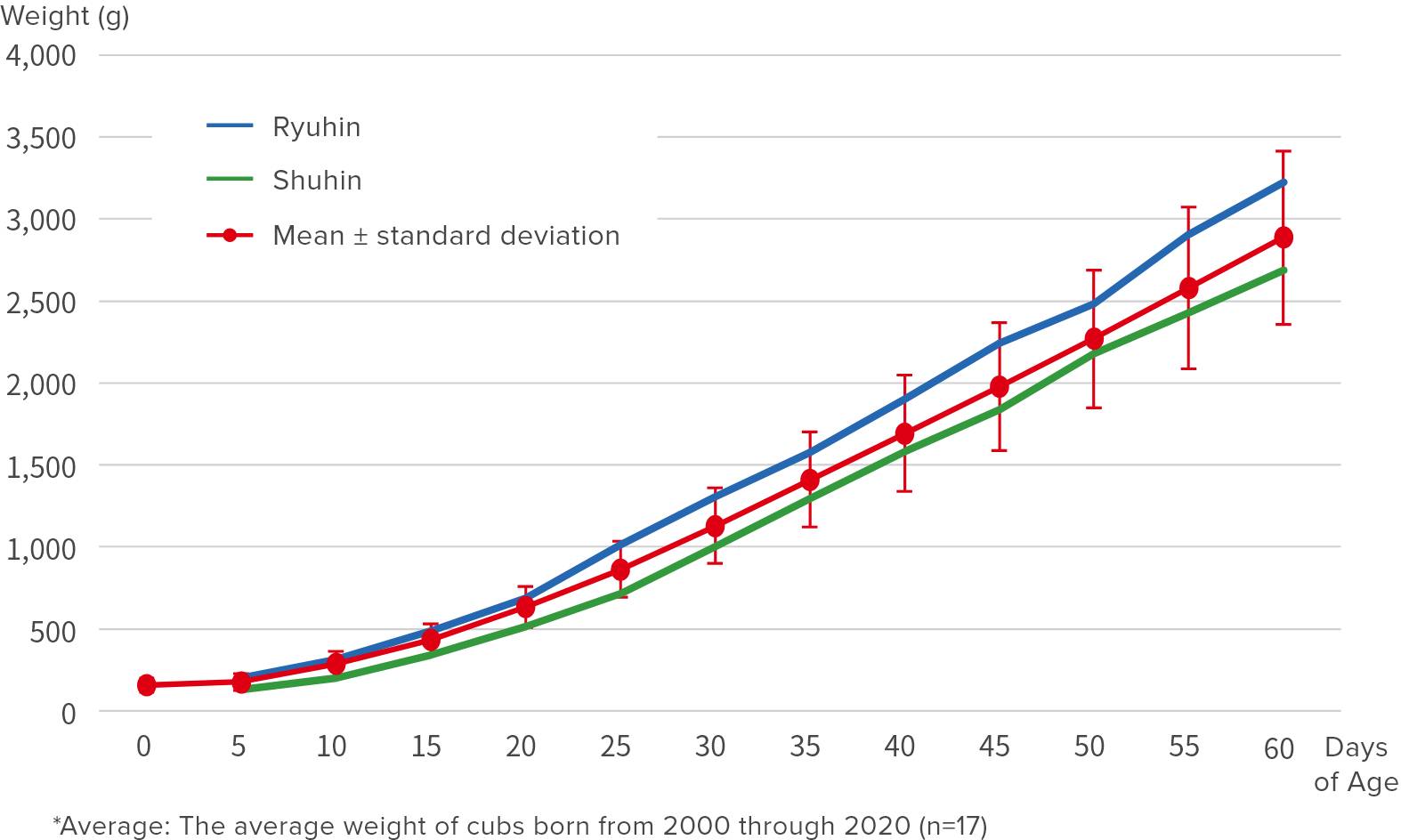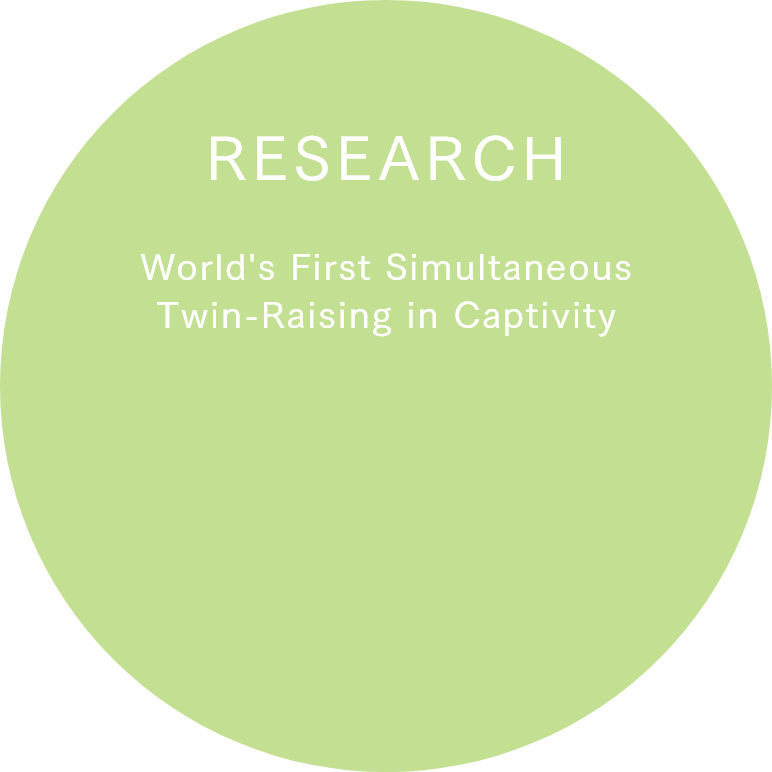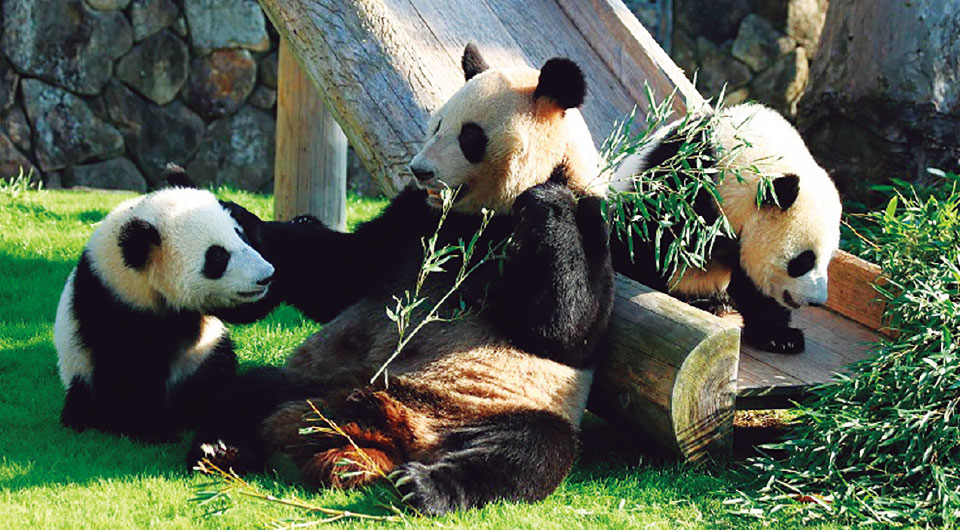

After the successful application of "twin- swapping" techniques by the Chengdu Research Base of Giant Panda Breeding in 1990, we are now able to raise both twin cubs. Thanks to this method, the survival rate of panda cubs has soared to 88%, and the method is now utilized as a standard at many breeding facilities around the world when twin cubs are born.
-
What is Twin Swapping?
This method works to ensure that both cubs born as twins are able to drink their mother's milk. One cub remains with the mother to be fed while the other is taken from the mother and placed in an incubator. Then, after the cub is fed, it is replaced by the other from the incubator.
-
Litter Size (no. of cubs born at the same time)
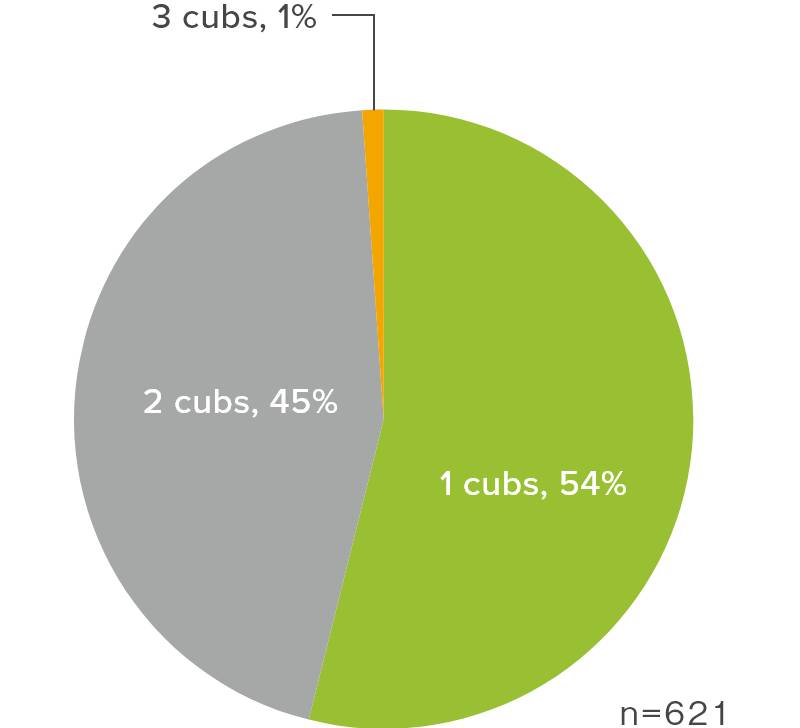
-
Changes in Panda Cub Survival Rate
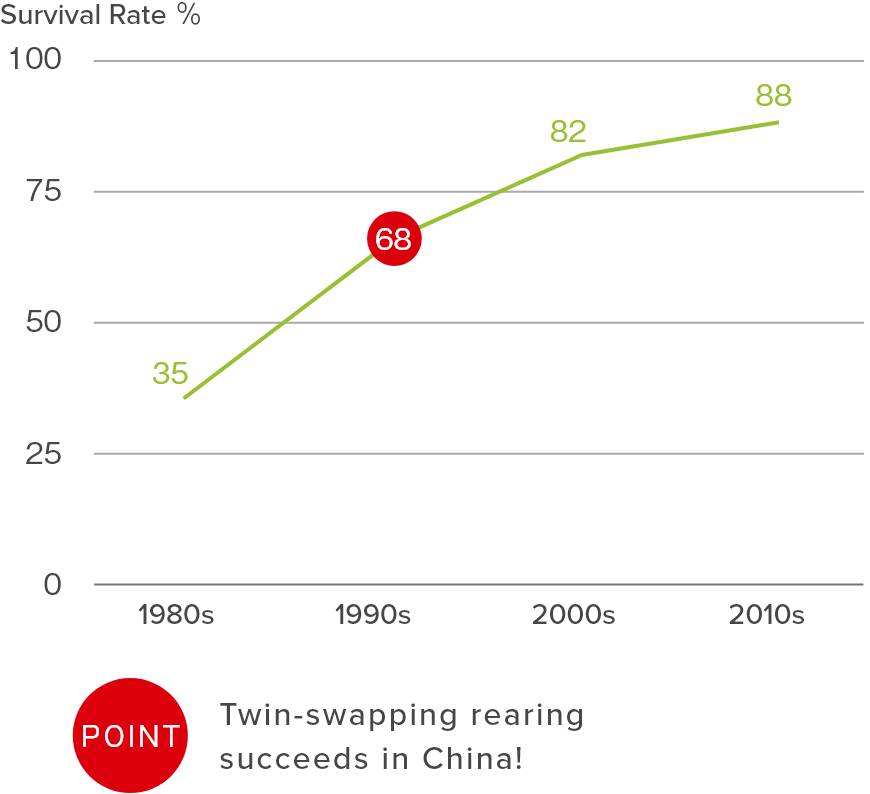
Based on data from The 2019 International Studbook for Giant Panda
In 2003, twin panda cubs were born at the park and their mother (name: Meimei) reared both. This was the first time a mother panda raised twin cubs at the same time in captivity. Meimei gave birth to the first of the twins, and two hours later to the second. She kept both cubs (names: Ryuhin, Shuhin) close and stead. In weight examinations
the following day, both cubs were seen to have produced excrement after drinking milk, which meant that both were being adequately fed. As such, a decision was made to allow the mother to tend to the cubs on her own.
Newborn cubs typically lose weight after birth before they start gaining more. Of the twins born at the park (in 2006, 2008, 2010, and 2014), it took between three to six days for newborns to exceed their birth weight. Ryuhin and Shuhin, however, weighed 160 and 106 grams respectively at 1 day of age, and 167 (+7 grams from the previous
day) and 106 grams (+0 grams from the previous day) at 2 days of age, showing no sign of falling weight, and went on to gain more. Both reached approximately double their birth weights at 10 days of age, and were raised by their mother's milk. Meimei gave birth to twins twice more, but the second cub born in 2005 weighed 66 grams at birth
and died when it was 1 day old. Of the twins born in 2006, the first (name: Aihin) weighed 196 grams at birth, while the second (name: Meihin) weighed only 84 grams, 112 grams less than the first-born sibling. The only way to ensure that Meihin was adequately fed was to employ the twin-swapping method. It is thought that Meimei's adept
cub-rearing abilities, amount of lactation, and the lack of significant weight difference between the twins a key in the successful natural rearing of Ryuhin and Shuhin in 2003. During this period, experts in Japan and China collected behavioral data for natural giant panda twin rearing and accumulated valuable experience which will improve
the survival rate of young panda cubs in the future. This situation in 2003 was reported at an international panda conference as the first instance of successful simultaneous twin rearing in captivity.
Changes in weight of Ryuhin / Shuhin
